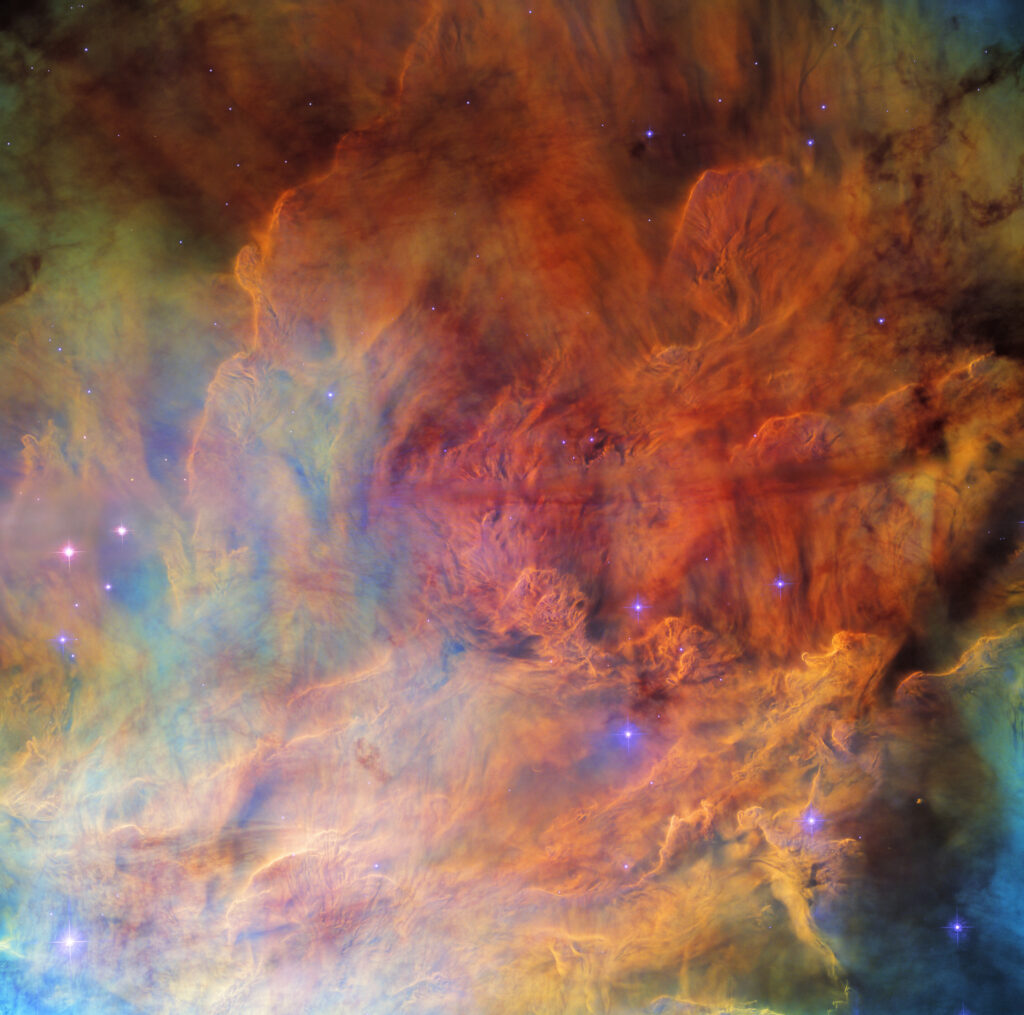Specialists of the Hubble mission support group have published a new colorful image. It shows a lot of multicolored gas clouds, which somewhat resemble a giant cosmic smokescreen.

The region captured in the image is part of the scattered cluster NGC 6530. It is located at a distance of 4,350 light-years from Earth in the direction of the constellation Sagittarius and is part of the larger Lagoon nebula.
The Lagoon nebula is a giant interstellar cloud of gas and dust. It is home to thousands of young stars which radiation affects the dust clouds surrounding them, creating various bizarre structures in them.
Astronomers directed Hubble to the Lagoon nebula in order to search for proplyds — a special class of illuminated protoplanetary disks surrounding newborn stars. The vast majority of these objects were found only in one place — in the nearby Orion nebula. This circumstance makes it difficult to understand their origin and time of existence.
Due to its ability to photograph in the near infrared range, Hubble is a valuable tool for studying such objects. Together with the capabilities of the newer James Webb Space Telescope, this should allow scientists to break through the dust curtain and see the earliest stages of the star formation process.
Earlier we talked about how Hubble photographed a “hidden” galaxy.
According to https://esahubble.org
Follow us on Twitter to get the most interesting space news in time
https://twitter.com/ust_magazine

